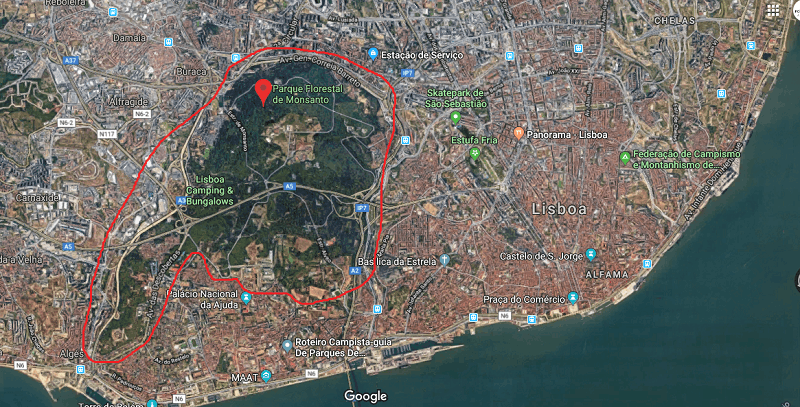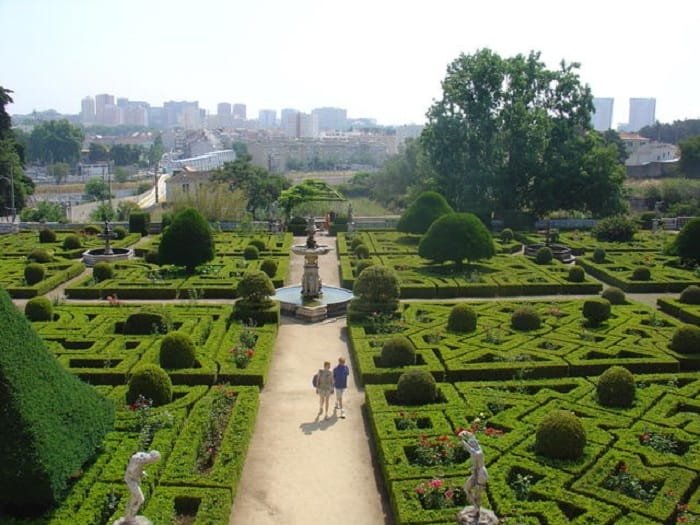When you arrive in Lisbon by plane, you immediately see a huge green spot in the middle of the city and you think: how much green! Lisbon is a city that has a lot of greenery, many gardens, parks and many trees and plants in addition to the green patch – the Monsanto Forest Park – which has an area of just over 1000 hectares. Known as the “green lung” of the city of Lisbon, the Monsanto mountain range is home to the largest forest park in Europe and occupies an eighth of the Portuguese capital, having the merit of being recognized for its biodiversity.

This large green space was transformed into a Forest Park in 1934 through a decree law that protects it to this day. But before being a protected place with so much greenery, the Monsanto mountain range was a vast space for cattle grazing and was still full of quarries that met the growing demand of the Portuguese capital. The plans to afforest the area date back to 1868, but were effectively put into practice in 1929. Currently, the site is a space that provides wide panoramic views over the Tagus and the city, not forgetting the plant and animal diversity that exists there. .

In the area, which covers seven neighborhoods of the capital, there are no buildings, just public and utility buildings, in addition to the occasional house here or there that was already there. Apart from that, what dominates the scene is the greenery, nature and the thousands of people who take advantage of the space to exercise, have picnics and be in contact with nature. In addition to the exuberant nature, there are roads that connect areas of the city and where some buses and cars pass. Only. Isn't it incredible? Running, cycling and walking. There is no better place for this than at Monsanto.

There is a structure for people to use the forest park, as the area provides, for everyone who wants to use it, various conditions for practicing different activities in the various places for meals in the middle of the forest, with stone tables and benches, in the recreational spaces and camping, such as Parque da Serafina, Parque do Alvito, Parque Moinhos de Santana, among others. In these same places, nature can be enjoyed without being degraded through playgrounds and some routes. Everything properly signposted.
It is now common sense that we must preserve green spaces, as they are essential in urban areas for a kind of 'cleaning' of the air, in addition to protecting various animal species and refreshing cities. This 1000-hectare Monsanto area that surrounds “Greater Lisbon” plays a fundamental role in the city and must be preserved and respected.

To facilitate people's access, since the park is really very large, the Biodiversity Route was created, with a 14 km pedestrian route that connects the Park to the Tagus River. This way, you can get to know the biodiversity of the place. In addition to this pedestrian route that allows you to discover the existing biodiversity, the Water Route was also created, measuring around 7.5 km. With a low degree of difficulty, this walking tour lasts three hours and is ideal for hiking and mountain biking.
Hats off to whoever had the idea, back in 1868, of creating this huge protected and untouchable forest park – the largest urban forest park in Europe. And look, in these times of real estate bubble, where everything is expensive, if this beautiful green lung wasn't protected, it might not even exist anymore. The idea is for other cities and countries to do the same, right?